Ebola: what we need to do
31 October 2014 | Story by Newsroom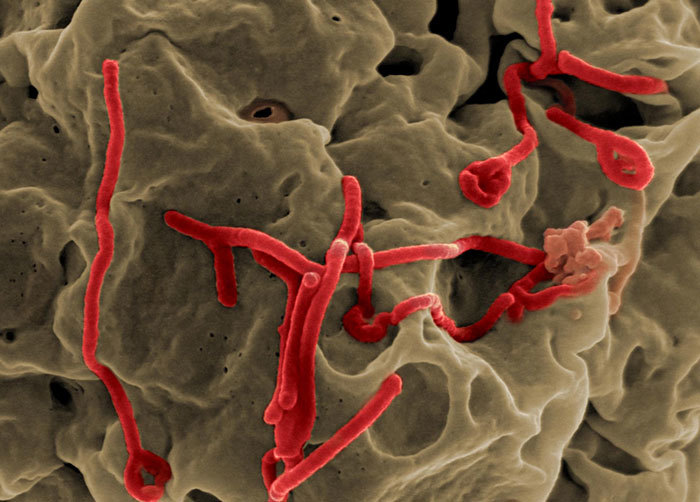
Kathryn Stinson is an epidemiologist who volunteered with MSF in Sierra Leone. On her return from Sierra Leone, she explains what must be done to manage the Ebola epidemic.
After leaving Freetown for the airport by hydrofoil, I reflected on how I felt when undertaking this route at the start of my journey. It was night, and there was no electricity. We were disorientated by sensory overload: while trying to become accustomed to the darkness and warm, humid air, we were also contemplating getting used to frequent hand-washing and keeping a distance between ourselves, not touching each other or objects if at all possible. The excitement was tangible, in the roar of the hydrofoil and the bellowing wind, but at the same time, laced with some fear '“ of the unknown, and of the invisible threat of Ebola.
Over the weeks in Kailahun, Ebola became visible. Not in the ubiquitous laboratory slide photo we've all seen, nor in any apparent spattering on the yellow hazmat suits '“ which as a non-clinician, I didn't get to wear. It might have been easier if it had presented in that way. But instead '“ at least to me '“ it appeared in multiple configurations of life and death. I have mentioned in my previous articles a man dying in prayer, and a woman losing her three-year-old child. She had been at the man's wife's funeral the previous week. To date, she still lives.
Two healthcare workers came in from a public health facility and died soon after admission. Both of them had examined the man's wife. After their admission, many were quarantined, as the two nurses had been actively involved in surveillance and training for the Ebola response in the local community. I have not been able to trace back further than the man's wife; she remains my 'index case' in this cluster. I don't know where or how she was infected, as those who were in contact with her have either died or have no knowledge. All I know is that when I left Kailahun, more cases were coming to the treatment centre each day from this village.
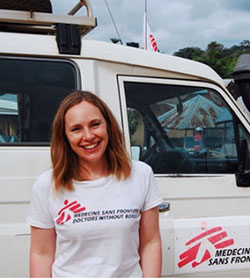
Then there was the local businessman who came in very ill, but was discharged one day this week. I witnessed him come into triage. I captured his blood results over ten days and I was present at his celebrated discharge from the treatment centre. Seemingly a Kailahun socialite, and a popular member of the community, his exit from the disinfection station involved cheers and clapping from the national staff '“ a hero's welcome. I had spoken with the man's son during his quarantine in a local school with other people who had been exposed to his father: his grandmother, his mother ... and what appeared to be his father's lovers. As I investigated, so I unravelled a soap opera of connections and love triangles.
The man's son was only about 20 years old. Young and fit, with a glowing smile, he told me that he'd got on the back of a motorbike taxi to support his sick father on the way to the local hospital, where his father had stayed briefly before being referred to the treatment centre. This same son was admitted to the treatment centre the following week, and died the day after his father was discharged. What makes some live and some die? We pondered this with the clinicians.
Every day the ambulances brought in different combinations of life and death: a mother, dead in a seated position, her head bowed over a live baby in her arms '“ who tested Ebola-negative on admission. Another dying woman didn't have the strength to pull her arm out from under another passenger who had collapsed and died on top of her. These are some of the stories from our courageous staff who open the ambulance door each day, not knowing what distressing sight they will find inside.
On the other hand, the community reaction to the ambulance, as it makes the journey from the isolation centres and more remote hospitals to the treatment centre each day, is one of consternation and fear. The siren frightens them. Would the driver please turn it off. And while we're about it, the patients must stop throwing soiled clothing and rubbish out of the windows en route to the treatment centre. There are suggestions that ambulance drivers need to stop and let passengers out from time to time, spraying chlorine copiously after each one as they return inside. But aren't they dealing with enough already '“ the bad roads, the long hours, and the suffocating personal protective gear they have to wear the whole trip?
Life and death in the context of Ebola is a health systems issue. Let me trace the path of the patient to explain why. The identification of an Ebola suspect in the community depends to a large extent on a well-functioning surveillance and alert system. There is a national toll-free Ebola number, and these calls are taken by Freetown and then distributed appropriately at district level. But some villages are so remote that there is no cell phone coverage. People there don't even have postal addresses, let alone a landline. Hence the concern that there is under-reporting of suspects and community deaths.
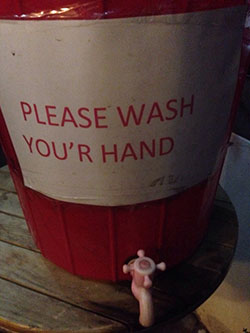
There is also widespread speculation that people hide the sick and dying. There is a price that is paid for declaring an Ebola case; that of 21 days of quarantine. This may involve wholesale removal to inappropriate premises, such as abandoned schools, with little contact with the outside world, and dependency on the state to provide every resource to survive, including food, bedding, and drinking and washing water.
Hiding the sick and dying is also a consequence of a public lack of confidence in the floundering health system, where the death of so many healthcare workers has resulted in the perception that hospitals are not safe. Word is quick to spread about nurses who put themselves at risk by setting up IV lines on suspects in the hospitals, and the lack of separation of suspects from non-suspect patients. During my stay, the community turned to pharmacists for help. The district health management reacted by closing the pharmacies down, and threatening to arrest anyone found to be selling drugs off the back of a motorbike. Seen to be fuelling the epidemic, pharmacists were accused of treating Ebola by providing paracetamol and other drugs to people without alerting the authorities to suspected cases. And fearing huge loss of income, the local pharmaceutical council is currently negotiating a settlement on this.
Once a suspect is identified, a surveillance or health officer will visit to verify the case. If thought to be Ebola, an ambulance will be called, and contact tracing is initiated. Given that there are only two operational ambulances to cover the district, a long wait for an ambulance is a grim reality. Holding centres also operate out of previously functioning primary healthcare clinics, where suspects are sent to wait for the ambulance. Regardless, there are often too many suspects waiting, and since the ambulance can transport only six patients at a time, during my time in Kailahun, there was speculation that those who were sickest were most likely to be left behind.
After boarding the ambulance, the sick passengers endure a torturous journey of between four and eight hours to the treatment centre. While these ambulances are 4x4 Landcruisers, there is no space to lie down, no matter how sick one is feeling. One is lucky to make it at all, and ambulances have suffered the misfortune of many other vehicles on Sierra Leone roads '“ that of getting stuck for hours on a stretch of road that has been reduced to soft, meringue-like mud after the rains.
Infrastructure for laboratory testing of Ebola is limited. Tests are done at one hospital, referring to the treatment centre. While a majority of the patients arriving at the treatment centre result in a laboratory-confirmed case, there are those who get on board who are negative. One only has to think of models of TB transmission in South African taxis to consider that the opportunity for transmission after such a long and bumpy ride (including contact with body fluids) is considerable.
Identification of patients at triage is crucial and our staff have a high rate of getting it right. This means identifying those who suit the clinical criteria as a suspect, versus those who are probably infected. A blood test is needed, this taking several hours '“ often the next day, given the late arrival of the ambulances '“ for the result to confirm the diagnosis. There is a need for a rapid, accurate test; preferably an oral swab, which would minimise the risk of exposure to health providers, and allow for patients to be triaged before they start the long journey to the treatment centre.
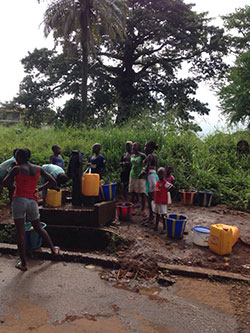
Death can happen at any time along this chain of events. Given that days five to nine are the most critical days, much rests on the ability of the health system to identify a case and deliver him or her timeously to care. Most of those who die in the ambulances or soon after probably had to wait too long. There is speculation about those who arrive with low viremia (amount of virus in their body); that perhaps they are in recovery. Again, this is dependent on an optimised surveillance system, as well as contact tracing and case investigations being carried out immediately and thoroughly after the identification of a suspect or a community death.
And on living: what provision has been made for those who recover? Those who survive walk through the low-risk zone to shake the clinical staff's hands, without the barrier of hazmat suits, to see their smiling faces and not just their eyes through the goggles. They need to re-enter community life, having faced harrowing trauma. Often these survivors will go back to very little: those who previously provided them with comfort, love and family may have succumbed to the disease. As yet, we know little of the potential for post-traumatic stress and stigma that Ebola survivors may face, many of whom may have also survived years of civil war.
The virus is possibly present in semen up to three months after recovery. Rumours about men forcing themselves on women abound, and condoms are said to be not widely popular. Authorities have suggested holding men in centres during this risk period to avert more infection; all we can do is watch and wait for the destruction of the social fabric of these communities, should this become practice.
MSF have called for more help for Sierra Leone. What is needed is intensified effort on the ground, which means more resources. We need more doctors and nurses, but before that, we need to build more treatment centres, preferably decentralised ones, to ease the burden on the lack of ambulances and the broken road system, and to allow for wider access. Hence, we need engineers, electricians, project managers and logisticians to build them, and water and sanitation experts to assist with infection control.
Also, we need to find the patients, through improved surveillance systems and contact tracing. The WHO have proposed neighbourhood watch groups in each community, which is a potentially exciting development. So much more capacity building is required to build strong cadres within the community.
Most importantly at this stage, we need to start to curb the spread, not just treat it. Social mobilisation and health promotion are strong forces at work in the communities. Spreading information about Ebola to dispel doubt and denial, and at the same time increase knowledge, can be a powerful weapon. Resources for training and hiring of local staff can go a long way towards changing community attitudes towards the disease. Cadres of social scientists, social workers and mental health workers are needed to effect this change and to continue to build evidence for effective psychosocial interventions. This is in addition to the ongoing clinical and epidemiological research opportunities that are emerging, given the extent of the epidemic.
As the epidemic will rage for months to come, we will also need to prepare for an increase of childhood diseases, and other endemic infectious disease '“ for example, Lassa fever '“ given that the health system has been brought to its knees.
Then again, you need to look no further than America to see the terror that this disease evokes. But even my 12-year-old son has been able to interpret the different realities of Ebola in the West, and Ebola in West Africa. In a speech prepared for school this week, he suggests that it boils down to the difference between those who have and those who have not: poverty, war and disease go hand in hand.
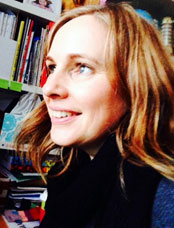 Kathryn Stinson has a PhD in Public Health and is an epidemiologist at the University of Cape Town. She has three children, two Great Danes and one very supportive husband. Kathryn writes in her personal capacity.
Kathryn Stinson has a PhD in Public Health and is an epidemiologist at the University of Cape Town. She has three children, two Great Danes and one very supportive husband. Kathryn writes in her personal capacity.
Photo of Kathryn Stinson and article were first published on GroundUp under a Creative Commons 4.0 License. Ebola scan courtesy of NIAID under creative commons 2.0 license.
 This work is licensed under a Creative Commons Attribution-NoDerivatives 4.0 International License.
This work is licensed under a Creative Commons Attribution-NoDerivatives 4.0 International License.
Please view the republishing articles page for more information.










